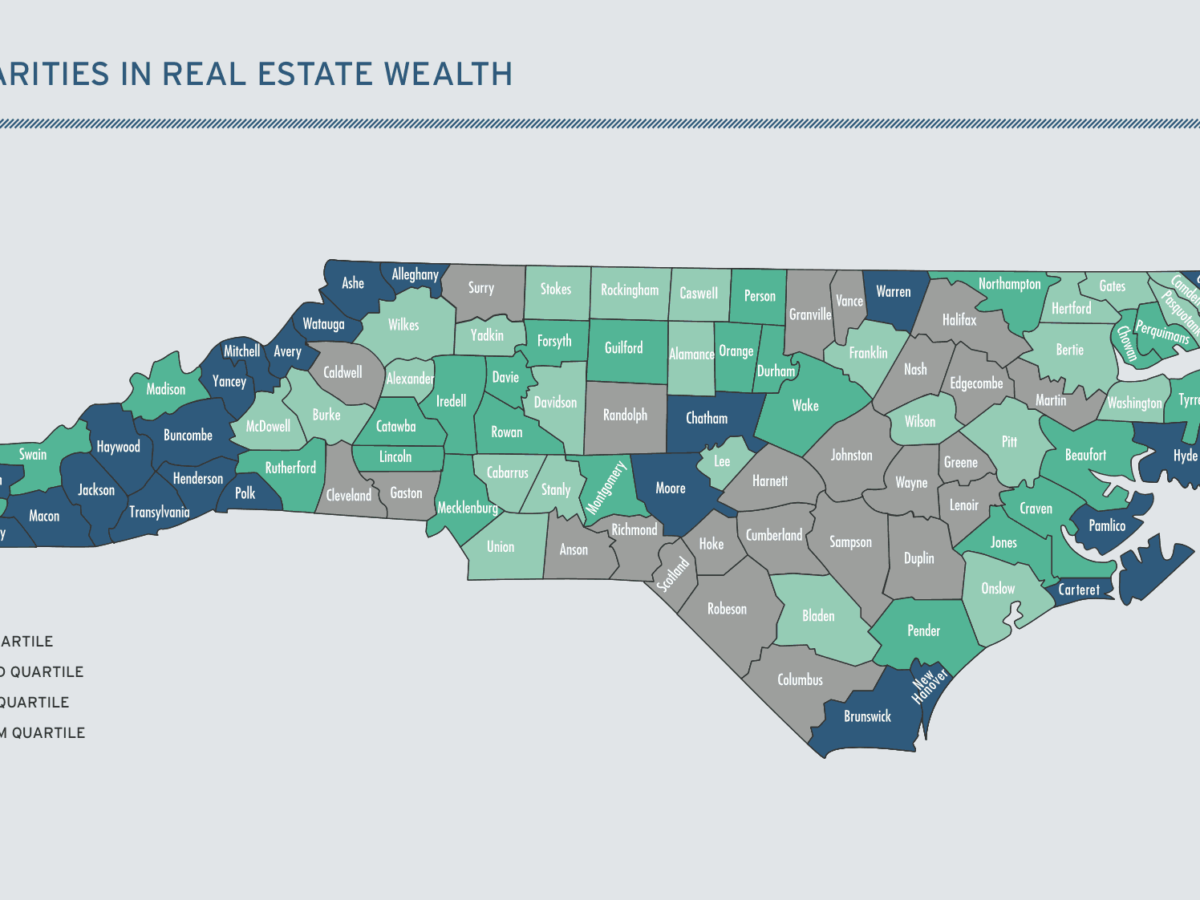

The Public School Forum of North Carolina released its 2015 study of local school finance and found disparities between local funding in high- and low-wealth districts in the state. Below is the press release by the organization. To View The Study Click Here.
RALEIGH, NC (February 3, 2015) – An annual study of local school finance in North Carolina by the Public School Forum of North Carolina details a large and persistent resource gap in public school funding between the highest and lowest wealth counties in the state. The 2014 Local School Finance Study, released today, found that in 2012-13, the state’s ten highest-spending counties spent an average of $56,758 more per classroom than the ten lowest-spending counties. This large gap exists primarily because of the variation in property wealth across the state, which in large part determines how much local revenue can be generated to support public schools.
“State policy decisions made during the last 25 years have narrowed the educational investment gap by providing additional funds for the state’s smallest and lowest wealth counties, and some of the state’s poorest counties have narrowed the gap through strong relative taxing effort,” said Joe Ableidinger, Senior Director of Policy & Programs, Public School Forum of North Carolina. “But even with these positive policy decisions, investments in North Carolina schools still vary dramatically by county, meaning young people born into one of our state’s economically thriving counties will have levels of investment in their schools far greater than those afforded to young people born in the poorest counties.”
Under North Carolina’s state constitution and school finance laws dating back more than eight decades, it is the state’s responsibility to pay for instructional expenses (including personnel) while county governments pay for capital expenses (buildings and maintenance). Over time, however, the lines have become blurred, and the local role in funding school operations has increased.
For more than 25 years, the Public School Forum has isolated local spending from state and federal spending to examine the capacity and actual effort of counties to support public schools. The annual Local School Finance Study focuses not only on the amount that counties spend on schools, but also on each county’s investment in the context of that county’s taxable resources. This year, for the first time, the study includes charter school enrollment in each county’s total Average Daily Membership (ADM).
The annual study consistently finds that wealthier counties are able to spend more on schools while simultaneously making less taxing effort. Because wealthier counties have more taxable resources, they can keep taxes low while still generating significant revenues. Conversely, counties with fewer taxable resources need to make greater taxing effort to support their schools at comparable levels.
As detailed in the study, in 2012-13 the ten wealthiest counties had an average of more than $2 million in real estate capacity available per student, compared with just $339,146 in the ten poorest counties. This gap has widened by over $1.2 million since the North Carolina Supreme Court’s Leandro decision in 1997. Similar gaps were evident in per-pupil funding, with the ten highest-spending counties spending an average of $2,855 per child, compared to the ten lowest-spending counties, which spent $672 per child. Orange County, at the top of the list ($4,145 per child), spent about as much per student as the seven lowest-spending counties combined, and more than ten times the amount spent by Swain County, at the bottom of the list ($384 per child).
The Local School Finance Study has been used over time by district finance officers, county commissioners, school board members, and other state and local education officials, to frame debates about school funding and state and local priorities.
“This annual study of local funding is an incredibly valuable tool that allows districts to compare themselves to other counties across the state,” said Aaron Beaulieu, Chief Finance Officer, Durham Public Schools. “It is a great resource that I look forward to receiving every year.”
The 2014 Local School Finance Study was made possible thanks to generous support from First Citizens Bank. The full report is available for download as a PDF at http://www.ncforum.org/local-school-finance-study/. To request a hard copy of the study, please contact Shelly Owens at sowens@ncforum.org.
###
About the Public School Forum of North Carolina
Since 1985, the Public School Forum of North Carolina has served as an indispensable and nonpartisan champion for public education. Our mission is to shape a world-class public school education that supports all children in reaching their full potential and drives a vibrant North Carolina. We do that through research, policy work, programs, advocacy, and continuing education for educators and policymakers. We are the only statewide coalition of business leaders, educators and government officials focused on education. Our practice areas are teaching and school leadership, expanded learning and after-school programs, school finance, standards and assessment and education innovation. Follow us on Twitter @theNCForum and visit our web site at http://www.ncforum.org/


